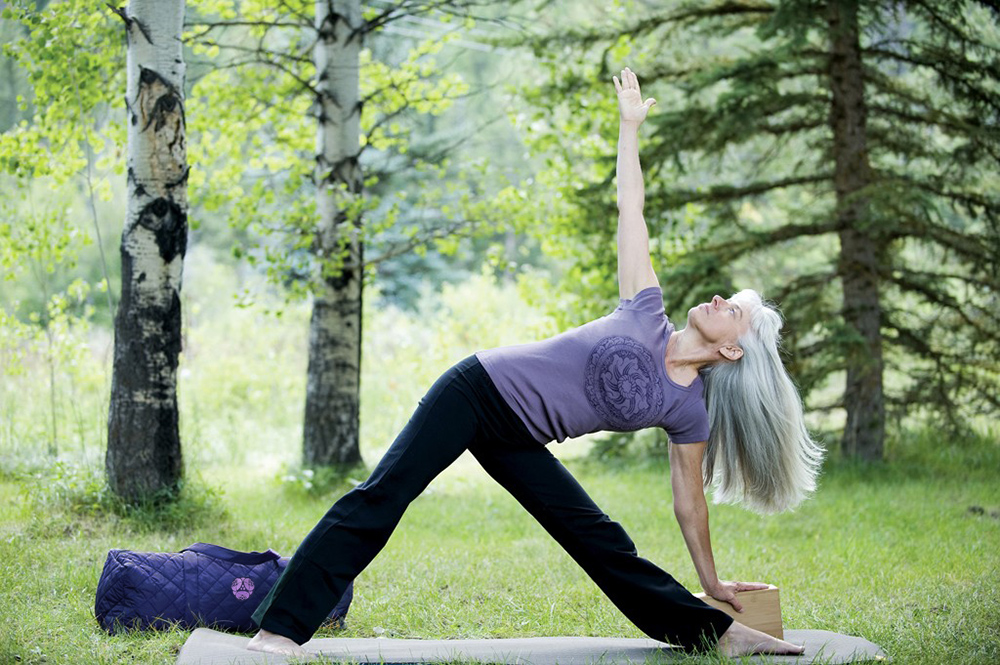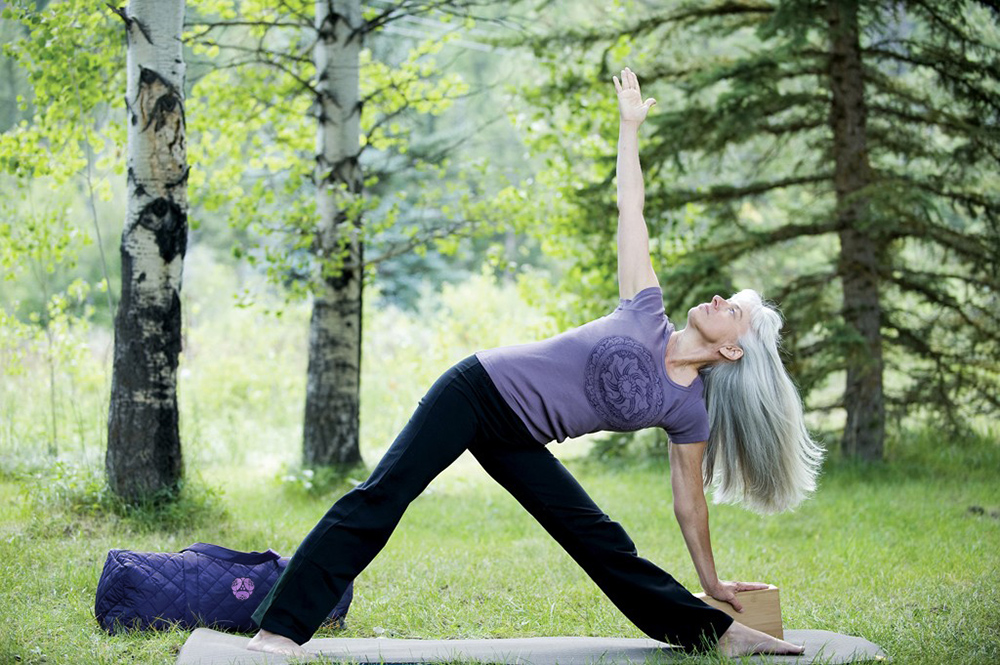This entry was posted on Might 21, 2024 by Charlotte Bell.

My 40-plus-year yoga apply is rooted within the Iyengar system. For many years, I studied with Iyengar academics, virtually completely. The non-Iyengar academics I’ve gravitated to have largely been individuals whose apply and instructing was grounded within the Iyengar system earlier than they determined to maneuver in a unique route.
B.Okay.S. Iyengar was a pioneer in disseminating the significance of cautious alignment. It is smart. Once I studied with B.Okay.S and his daughter, Geeta, in Pune a few years in the past, he acknowledged that the aim of asana apply was to create within the physique an energized and peaceable atmosphere to allow the thoughts to be each alert and calm. A physique that’s undisciplined and misaligned is much less prone to relaxation in a state of equilibrium. This little bit of knowledge has guided my intentions for apply.
A Completely different Method of Alignment
Whereas I agree utterly with this in concept, and thru many years of my very own apply, I’ve begun to maneuver away from utilizing the phrase “alignment” in favor of the idea of “continuity.” All too typically, “alignment” can suggest that there’s one solution to prepare one’s physique in a pose, and that it’s common. I do know that many academics perceive that alignment is just not a one-size-fits-all proposition, however for me, the phrase itself implies this.
Continuity, however, suggests a extra inner expertise. Continuity refers to a state of harmonious settlement all through the moveable components of the physique. In different phrases, once we concentrate on continuity, we tune into the relationships between bones at every joint, between the inside motion intentions (the breath) and the outer manifestation of an asana, and between the interior and exterior constructions of our our bodies. On this publish, I’d prefer to concentrate on continuity by way of the joints.
Continuity By means of the Joints
In the event you spend a lot time taking a look at yoga images, chances are you’ll get the concept that attaining Cirque du Soleil-like poses is indicative of “good” apply. Folks working towards poses which can be structurally unattainable for many practitioners might or might not be “superior” yogis. I do know I’ve stated this in a thousand other ways, however yoga is just not about performing fancy poses. It simply isn’t.
Asana apply is about harmonizing our our bodies and minds. And creating continuity by way of our joints is one very concrete and attainable means of transferring right into a state of ease and concord.
Continuity by way of our joints signifies that slightly than specializing in pushing to the top vary of our joints with the intention to obtain the “full expression” of a pose, we as a substitute create clean transitions by way of our joints. Pushing joints to their finish ranges can typically create micro-tears and impingements within the joint capsules. Always overstretching ligaments—the collagenous tissue that connects bones to different bones—creates unstable joints.
Defending Your Ligaments
Ligaments are designed to restrict the motion of our joints. When our ligaments grow to be overstretched from frequently pushing our joints into their finish ranges, our muscle mass should grow to be tighter with the intention to do the work of the ligaments. Whereas we might not really feel these accidents within the second of pushing into our joints, habitually doing it will put on down gentle tissue over time, resulting in joint issues down the highway.
Pushing joints to their finish ranges will increase stress in our nervous techniques as our our bodies’ pure protecting mechanisms kick in to maintain our joints from transferring too far. If asana’s objective is to create a peaceable atmosphere within the physique, pushing for optimum sensation is just not the best way to do it. Joint continuity might require you to maneuver to your finish vary after which again off a bit. Once I do that, my poses really feel far more secure and grounded and my thoughts feels instantly comfortable.
Tips on how to Create Continuity
Creating continuity is a tough proposition. It’s tough as a result of there’s no robust sensation that accompanies continuity. After we push into our joints to the purpose of sensation—snug or uncomfortable—we all know who and the place we’re. After we again off a bit within the service of continuity, there’s not an entire lot of apparent sensation.
So I prepare my physique in such a means as to really feel little to no sensation at my joint websites—ft, ankles, knees, hips, sacroiliac joint, vertebral joints, shoulders, elbows, wrists and fingers. I create my pose from the bottom up, checking in with every joint as I soften into the asana.
Practising with the intention of making continuity can also be tough as a result of it’s prone to be variable from day after day. That’s the place mindfulness is so helpful. After we study what continuity appears like, we are able to alter our asanas from the within.
Transfer Slowly, Use Yoga Props and Be Aware
Typically it’s useful to maneuver slowly and consciously towards your finish vary. While you attain your finish vary, again off a bit, till you are feeling a way of ease in all planes round your joint. There needs to be no sense of impingement or restriction of the movement of vitality between the bones at every joint.
Even if you happen to don’t recurrently use yoga props—blocks, straps, blankets, and so forth.—use them while you apply for continuity. They’re invaluable instruments for serving to you obtain structural integrity in your poses.
Mindfulness of the disposition of your mind may also help you identify in case your pose is in concord with itself. Does your mind really feel tight, onerous, strained or contracted? If that’s the case, loosen up your mind if doable, then look across the physique and word the place else you could be straining.
All these cues are refined. They require that we glance extra deeply than we could also be used to. An overstretched or impinged joint will communicate proper up—its suggestions is true on the floor. Reciting alignment guidelines in our heads as we apply squelches deeper exploration. Trying deeper is the essence of yoga apply. Practising for continuity brings ease to the journey of deep trying.
About Charlotte Bell
Charlotte Bell found yoga in 1982 and commenced instructing in 1986. Charlotte is the creator of Aware Yoga, Aware Life: A Information for On a regular basis Observe and Yoga for Meditators, each revealed by Rodmell Press. Her third e book is titled Hip-Wholesome Asana: The Yoga Practitioner’s Information to Defending the Hips and Avoiding SI Joint Ache (Shambhala Publications). She writes a month-to-month column for CATALYST Journal and serves as editor for Yoga U On-line. Charlotte is a founding board member for GreenTREE Yoga, a non-profit that brings yoga to underserved populations. A lifelong musician, Charlotte performs oboe and English horn within the Salt Lake Symphony and people sextet Purple Rock Rondo, whose DVD received two Emmy awards in 2010.

